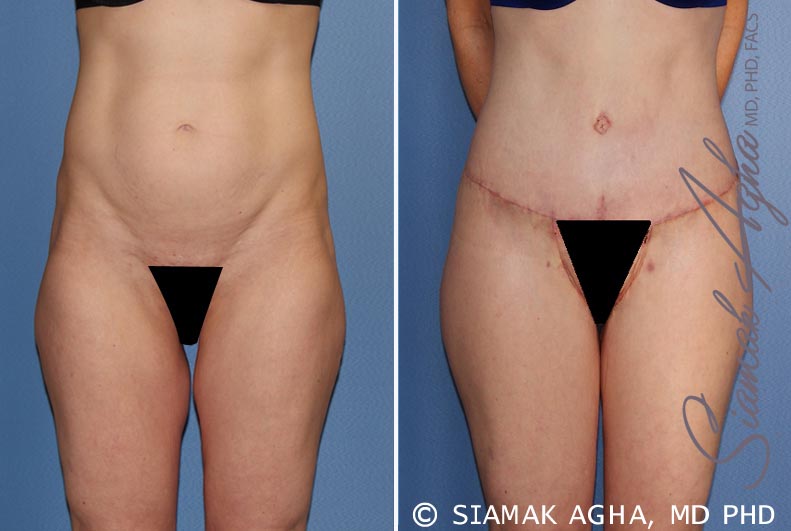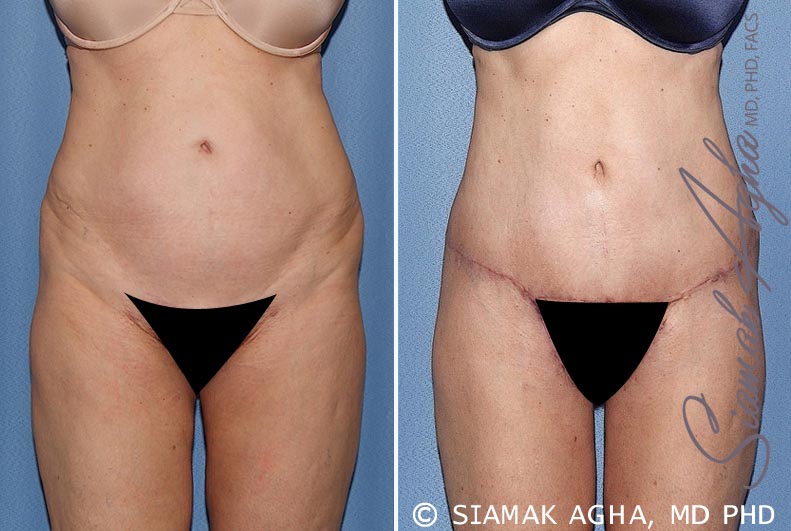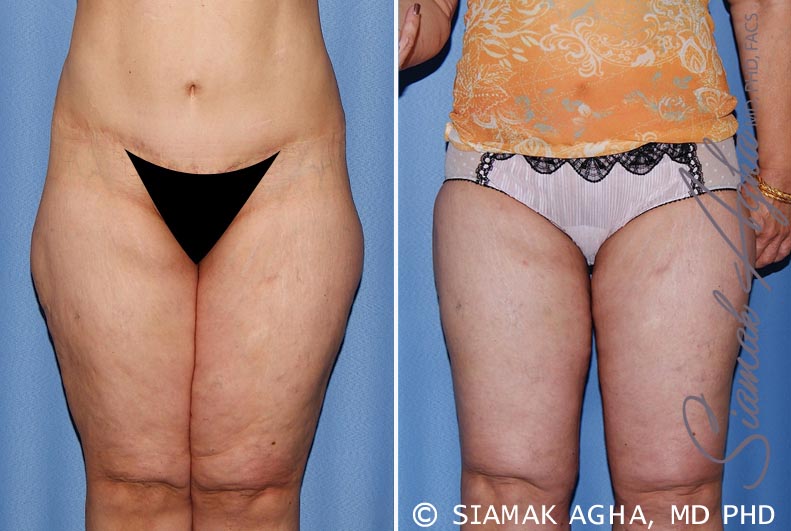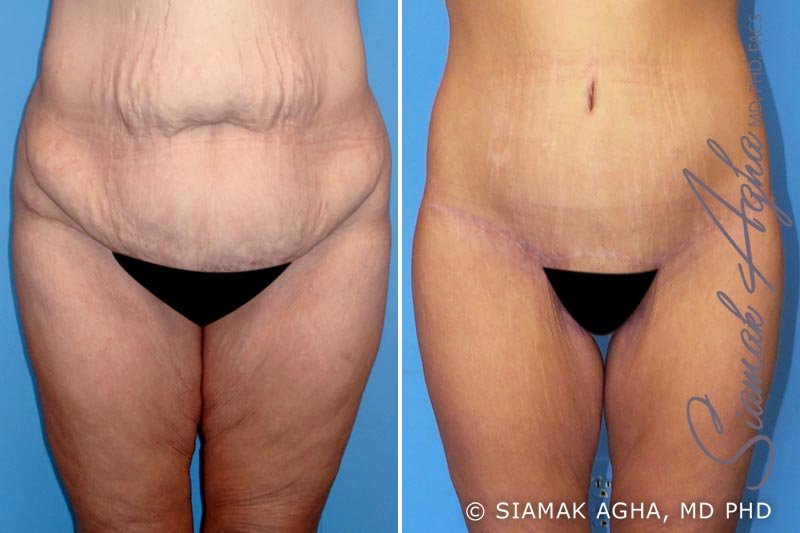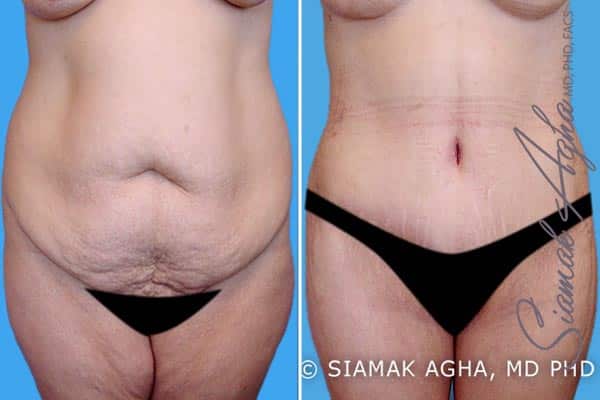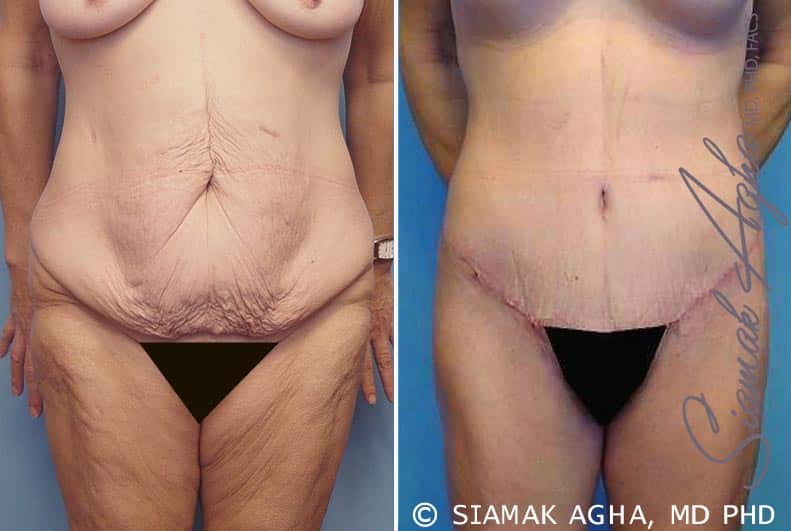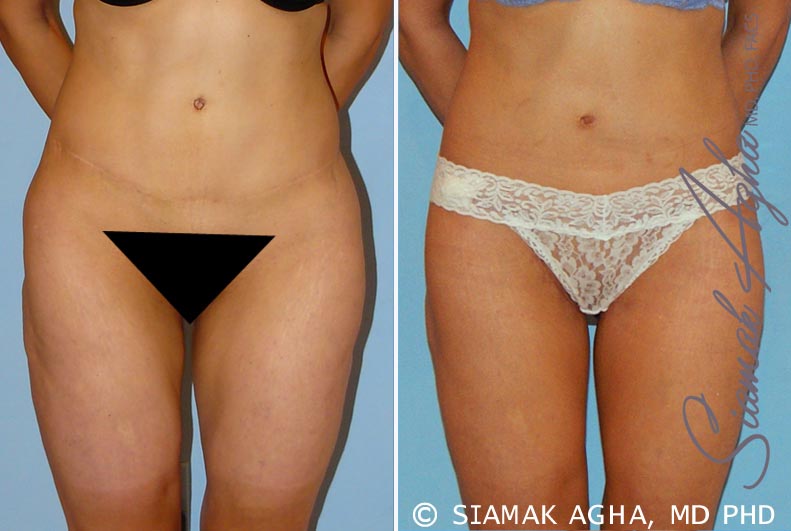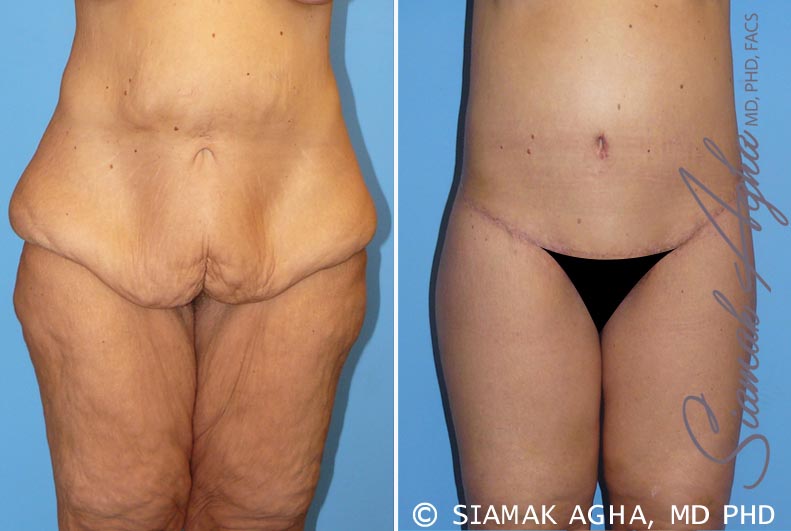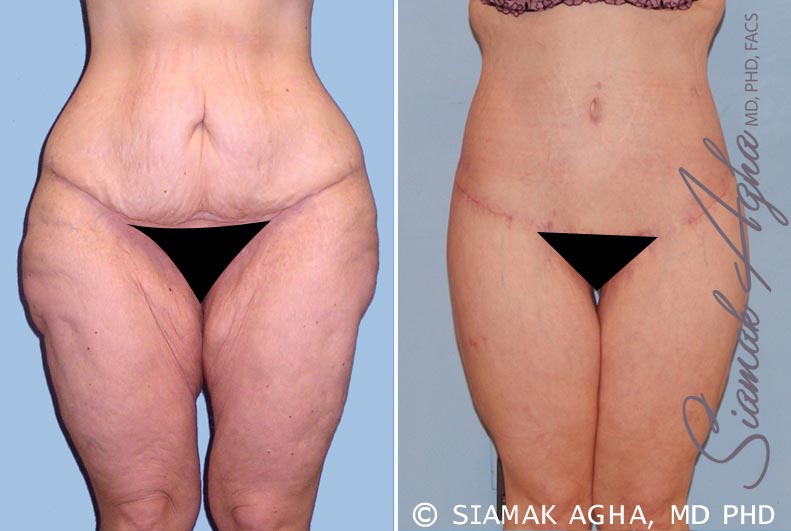THIGH ENHANCEMENT
– NEWPORT BEACH, CA –For many women, having an hourglass figure is the epitome of femininity. And nothing else can better emphasize your hips than firm and slender thighs.
The desire for the perfect thighs has become even more popular because of the thigh gap and the age-old compliment of having “legs for days.” No wonder women dream of having thighs as alluring as Heidi Klum’s firm and muscular legs or Amal Clooney’s shapely thighs.
Aesthetically beautiful thighs have always been associated with a healthy and youthful figure.
The ideal thighs should be in proportion to your hips, buttocks, legs, and abdomen. Firmness is one of the most important qualities, but there are more factors that go into the perfect thighs.
Both the trunk and outer thighs complete an hourglass figure — a concave, small waist going all the way to smooth, convex outer thighs.
From the back, the thighs are separated from the buttocks with a well-defined fold. From the front, the smooth thighs should be well-supported by the underlying muscles. Your inner thighs should be firm and flat, without any excess fat or skin.

Aging can also do a number on your arms, as it can make you lose subcutaneous fat, leaving your skin shriveled and wrinkled. Constant sun exposure can even further expedite the aging process.
Thankfully, you can achieve your ideal firm and slender thighs with the help of a highly-qualified and experienced plastic surgeon like Dr. Siamak Agha, one of SoCal’s top board-certified plastic surgeons.
Find out how you can get Shakira’s thigh gap or Beyonce’s jaw-dropping stems through thigh enhancement surgery in this article.



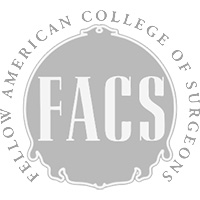


What is a Thigh Lift?
The keys to firm and well-contoured thighs are excellent skin elasticity and the absence of excess fat deposits. Without these two, you might be left with unsightly lumps of dimpled flesh and sagging skin on your thighs.
This is where thigh enhancement surgeries come in — procedures that help you achieve a tighter, firmer, and more toned thigh appearance.
You can choose from the following surgeries, depending on the existence of excess skin and fat deposits.
- Thigh Liposuction – If you have good skin elasticity on your thighs and your only problem is the presence of excess fat deposits, then thigh liposuction might just be what you need. It can be performed when there is too much fat on your saddlebags, inner thighs, thigh front, thigh backs, and banana rolls.
- Thighplasty – Recommended for people wanting to get rid of excess skin on their thighs, thighplasty is essentially a thigh remolding procedure. You can either get:
- A thigh lift, which lifts your thigh to make it look firmer. It is used for vertical excess skin which gives the appearance of the whole thigh sagging.
- A thigh reduction, which reduces the circumference and width of the thigh. It is used for horizontal excess skin which you can identify with skin rolls on your inner thigh.
If you have excess fat and good skin elasticity, thigh liposuction might be enough. On the other hand, thighplasty gives you more slender and proportionate legs by getting rid of excess skin and underlying fat.
That’s why it’s very popular among women aged 40 to 54, comprising 47% of all thigh enhancement procedures in the United States in 2019 according to the American Society of Plastic Surgeons.
If you have too much fat and too much skin, you can combine both thigh liposuction and thighplasty, as in the case for most patients.


What are the Different Thighplasty Techniques Offered by Dr. Agha?
Your thigh has four surfaces: front, outer, inner, and back. Each surface has a corresponding thighplasty technique, and there are also thigh lifts that reduce thigh width and circumference.
Check out the different thighplasty techniques Dr. Agha uses.
How Does Dr. Agha Do Thighplasty?
Thigh enhancement is generally considered an outpatient procedure.
More often than not, Dr. Agha combines thigh liposuction with a thighplasty to reduce the appearance of larger thighs. It is also best paired with other body contouring procedures, like lower body lift, tummy tuck, and buttock enhancement, for a better overall aesthetic appearance.
Though a thigh lift only takes 2-3 hours to finish, combining it with a lower body lift may take 7-8 hours.
Check out how Dr. Agha performs the thigh lift in this step-by-step lowdown.
Preparation
During your initial consultation, Dr. Agha will ask you about the following:
- General physical and mental health status
- Pre-existing health conditions, especially heart disease, diabetes, thromboembolic disease, connective tissue disorders, and wound healing problems
- Prior surgeries, including gastric bypass surgery and laparoscopic procedures
- Medications currently being taken
- Allergies
- Smoking habits and alcohol use
- History of weight gain and loss
- Psychological issues
Being honest and thorough with your answers during your initial consultation is of utmost importance to ensure your safety and prevent complications after your surgery.
Dr. Agha will also examine your lower body anatomy to come up with the best surgical plan for your condition. He will evaluate the following:
- Waist, hips, saddlebags, buttocks, and calves
- Shape, size, and proportion of your thighs relative to the rest of your body
- Degree of excess fat
- Degree and orientation of skin laxity
- Severity of vertical and circumferential looseness of thigh tissues
Knowing these things will help Dr. Agha figure out which thighplasty procedure is best suited for your condition.
Dr. Agha will also discuss your concerns, priorities, and motivations for getting thigh enhancement surgery. He will then give you information on your thighplasty options, then plan an appropriate plan of action that best suits your anatomy and meets your desires and expectations.
Other things that will be discussed include potential risks and complications, estimated cost, and procedure schedule. You will also be asked to obtain specific lab tests and medical evaluation, take or adjust certain medications, and avoid taking aspirin, herbal supplements, and anti-inflammatory drugs that might increase your chances of bleeding.
If you smoke, you will be asked to quit at least three weeks before your thigh lift and remain smoke-free three weeks post-op to avoid any delays in your healing process.
On the day of your surgery, Dr. Agha will mark certain landmarks on your thigh and pelvic bone in the pre-operative area to properly plan the incision and liposuction site.
You should arrange for a friend or family member to drive you to and from the surgery center, as well as assist you during the first 24 hours post-op.
Anesthesia
A board-certified anesthesiologist will put you under general anesthesia before your thigh lift.
Afterward, Dr. Agha will inject a tumescent solution at the sites of your incision and liposuction. It consists of a low concentration of lidocaine for numbing the surgical site and epinephrine for reducing the potential for bleeding and bruising.
Thigh Liposuction
After injecting tumescent fluid into the marked liposuction areas, Dr. Agha proceeds with liposuction to reduce the fat content of these areas and surrounding tissues.
Dr. Agha inserts a liposuction cannula through one or more small incisions into the deep fat layer of the thighs. He will move the cannula back and forth to break up the fat cells, and then suction it out.
Liposuction can be limited to the inner thighs, banana rolls, saddlebags, or the whole thigh circumference.
Thigh Lift
Dr. Agha creates the incisions of the particular thigh lift procedure and removes the excess upper thigh skin and fat.
After partially detaching the thigh tissue, he lifts the tissue up and anchors it to supporting structures or bone using anchoring sutures. He then closes the incision in three additional layers.
Post-Surgery
Dr. Agha places all his sutures beneath the skin to allow them to be gradually absorbed by the body. Because of this, you no longer have to undergo suture removal, improving your comfort and satisfaction as a patient.
After carefully closing the incisions to minimize your scar, Dr. Agha applies a sterile dressing and wraps a compression garment on the surgical site. The garment helps support your lower body during healing and decreases postoperative swelling and bruising.
If you are considering having any kind of plastic surgery I would highly recommend Dr Agha and his wonderful staff. It was the best decision I have ever made.
Karen K
Why Should You Choose Dr. Agha for Your Thighplasty?
Thigh lift and thighplasty are specialized body contouring procedures that not all board-certified plastic surgeons perform routinely. In fact, according to data from the American Society of Plastic Surgeons, most plastic surgeons only perform 1-2 thighplasties per year.
On the other hand, Dr. Agha performs about 50 or more thighplasties per year, as well as plenty of thigh liposuctions. What he does in one year equates to what many plastic surgeons do in a lifetime.
With 18 years of experience in thigh lift surgeries, Dr. Agha has probably performed more thigh lifts than most plastic surgeons in the world. His extensive experience has allowed him to pioneer such techniques as the spiral thigh lift and anterior thigh lift. The spiral thigh lift was published in the Encyclopedia of Body Sculpting After Massive Weight Loss in 2010.
Dr. Agha’s aesthetic eye and more than a decade of experience matter not only in performing surgeries correctly and optimally but also in avoiding complications and ensuring healing — all essential components of every successful plastic surgery.
Do You Need Thighplasty Revision?
It is important that you get your thigh lift or thigh reduction done correctly the first time.
However, a large number of patients that contact us have previously had procedures that were not optimally done and can be improved upon. This is especially the case for thigh enhancement surgeries, where most plastic surgeons do not have much experience, hence planning a conservative treatment.

Thus, every year, Dr. Agha is asked to perform around 10 or more thigh lift revisions due to various reasons such as:
- Remaining excess skin
- Labial spreading of the inner thigh lift
- Asymmetry of results
Usually, Dr. Agha excises the existing thigh scar and works through that incision to optimize the surgical result.
Recovery After Inner, Medial Thigh Lift and Spiral Thigh Lift Surgeries
Please read the General Instruction Sheet as well.
All recovery procedures are focused on minimizing pain and improving your healing. Typically, you will need at least 4-6 weeks to heal from these thigh surgeries.
You’ll experience some discomfort and tightness for the first 3-5 days, but these should slowly resolve over time.
What Results Can You Expect from a Thighplasty?
After you get thigh enhancement, you will have…
- Tighter, firmer, and smoother thighs
- Thighs proportional to your body shape and weight
- Improved thigh contour
- Greater access to different clothing styles that flaunt your thighs
- No more skin irritation from excess thigh skin
- Improved self-esteem and confidence
Though thigh enhancement surgeries produce permanent results, factors like aging, weight gain or weight loss, and pregnancy can affect your long-term results. Maintaining a healthy diet and exercise regimen helps maintain the results from your surgery.
What are the Potential Risks and Complications?
Like with any plastic surgery, there are risks involved during and after thigh enhancement surgery.
Though Dr. Agha takes all precautions necessary to avoid these and assists in addressing any complication that might occur, it is still important to know them so that you can make an informed decision.
Check out this article to learn more about the possible complications of body surgeries.
Thighplasty FAQs
Get Your Thighplasty Done in Newport Beach, Orange County
Thigh enhancement can give you lean, firm, and well-contoured thighs, creating the sought-after hourglass body shape.
To achieve optimal results, choose an experienced and qualified plastic surgeon like Dr. Agha for your thigh enhancement. He can help you choose which procedures will be most effective based on your body type and expectations.

